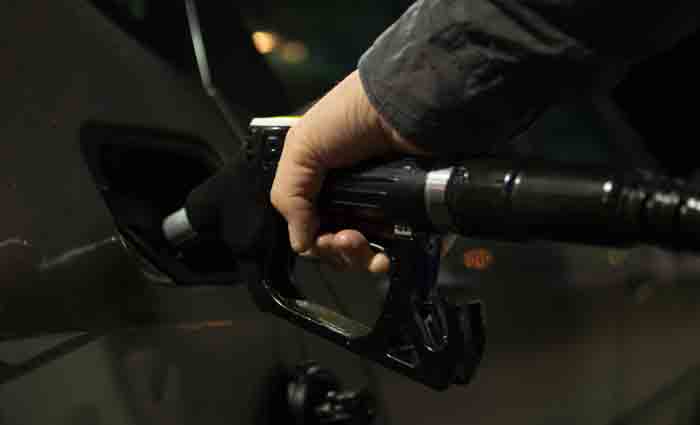Lowest Easter petrol prices in 11 years offer defacto rate cut: CommSec's Craig James
GUEST OBSERVER
Retail petrol: According to the Australian Institute of Petroleum, the national average Australian price of unleaded petrol fell by 0.4 cents per litre to 112.3 cents per litre in the week to March 27. The petrol price was the lowest in the week ahead of Easter for 11 years.
Wholesale petrol: The terminal gate (wholesale) petrol price is only 0.1 cents a litre lower than a week ago but up 8 cents a litre on lows set just over a month ago.
Asian gasoline: In Australian dollar terms the Singapore gasoline price lifted by 1.3 cents a litre last week and rose another 0.5 cents a litre on Monday. Prices are up around 9 cents a litre from recent lows.
The petrol figures have implications for retailers, especially petrol marketing groups.

What does it all mean?
The general assumption is that petrol prices rise ahead of Easter. But in capital cities over the past week, prices trended lower or were at worst flat. And the national average petrol price was the lowest in 11 years.
Certainly prices were lower just over a month ago. But as often happens, prices probably over-shot on the downside. And indeed prices have probably rebounded too much in the past few weeks – especially given plentiful world oil supplies.
As the Reserve Bank Governor pointed out last week, lower oil prices are generally considered stimulatory for economic activity. The fear this time around is that lower oil prices will put pressure on producers and their banks.
But as the RBA Governor pointed out, Aussie banks are well positioned: “In the business space, the banking system has fairly modest direct exposure to the falls in oil and other commodity prices, with lending to businesses involved in mining and energy accounting for only around 2 percent of banks' total lending.”
What do the figures show?
Petrol prices
According to the Australian Institute of Petroleum, the national average Australian price of unleaded petrol fell by 0.4 cents per litre to 112.3 cents per litre in the week to March 27. Over the past month, prices have lifted 5.8 cents from 7-year lows. The metropolitan petrol price fell by 0.3 cents to 112.3 cents per litre while the regional price fell by 0.6 cents to 112.4 cents per litre.
The national average Australian price of diesel petrol held steady at 111.4 cents per litre in the week to March 27. Last week the metropolitan price fell by 0.1 cents to 111.3 c/l, while the regional average price was unchanged at 112.0 c/l.
Average unleaded petrol prices across states and territories over the past week were: Sydney (up by 4.9 cents to 114.7 c/l), Melbourne (down 5.2 cents to 107.3 c/l), Brisbane (down 4.6 cents to 113.2 c/l), Adelaide (up 6.9 cents to 116.4 c/l), Perth (up 0.8 cents to 111.8 c/l), Darwin (down by 0.4 cents to 115.6 c/l), Canberra (up 0.1 cents to 117.2 c/l) and Hobart (down by 0.1 cents to 117.4 c/l).
Today the national average wholesale (terminal gate) unleaded petrol price stands at 103.55 cents per litre, down 0.1 cents per litre on a week ago but still almost 8 cents a litre higher than the lows set a month ago. The terminal gate diesel price stands today at 97.90 cents a litre, up 0.5 cent a litre over the week.
Last week the key Singapore gasoline price rose by US45c or 0.8 per cent to US$54.45 a barrel. The price rose a further US75c or 1.4 per cent to US$55.20 a barrel on Monday. In Australian dollar terms the Singapore gasoline price rose by $2.04 a barrel (2.9 per cent) to $72.68 a barrel or 45.71 cents a litre. The price rose further to 46.23 cents per litre on Monday.
MotorMouth records the following retail prices for capital cities today: Sydney 107.9c; Melbourne 104.9c; Brisbane 111.5c; Adelaide 110.0c; Perth 101.3c; Canberra 113.1c; Darwin 115.0c; Hobart 118.1c.

What is the importance of the economic data?
Weekly figures on petrol prices are compiled by ORIMA Research on behalf of the Australian Institute of Petroleum (AIP). National average retail prices are calculated as the weighted average of each State/Territory's metropolitan and non-metropolitan retail petrol prices, with the weights based on the number of registered petrol vehicles in each of these regions. AIP data for retail petrol prices is based on available market data supplied by MotorMouth.
What are the implications for interest rates and investors?
The low price of petrol represents a de facto rate cut for consumers. So as long as petrol signboards show $1.00- $1.20 a litre in major capital cities, spending growth will be supported. The world is well supplied with oil. But producers have signalled that they are more comfortable with prices of US$30-40 a barrel, rather than US$20 or even $50 a barrel. So there will be pressure on producers to try and reach some production agreement to stabilise prices

Craig James is the chief economist at CommSec.
